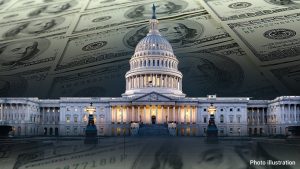The Federal Reserve’s “dot plot,” introduced in 2012 to enhance transparency regarding future interest rate decisions, has ironically become a source of confusion and market volatility. Intended to represent individual Federal Open Market Committee (FOMC) members’ projections for the federal funds rate, the dot plot is often misinterpreted by investors and analysts as a definitive forecast of the committee’s intentions. This misinterpretation undermines the plot’s purpose and necessitates its discontinuation.
The dot plot’s inherent flaw lies in its poor predictive accuracy. Over the past decade, its one-year forecasts have only been accurate roughly half the time. This inconsistency stems from the unpredictable nature of economic events and the FOMC’s inability to foresee exogenous shocks impacting employment and inflation – their primary mandates. Expecting FOMC members to precisely predict future rate decisions is akin to expecting a weather forecaster to flawlessly predict daily conditions months in advance. Such precision is simply unattainable given the dynamic and complex nature of both weather systems and economic forces.
Further compounding the issue is the dissonance between the dot plot’s dispersed projections and the actual FOMC voting record. The plot often displays a wide range of individual rate predictions, suggesting significant disagreement among members. However, this visual disparity rarely translates into actual voting dissent. A recent example from December 2023 reveals a wide range of projections for the year-end 2024 fed funds rate, from 3.875% to 5.37%. Yet, the actual rate settled at 4.33% with near-unanimous agreement among FOMC members, demonstrating that the spread of individual predictions on the dot plot does not accurately reflect the cohesive nature of the committee’s decision-making process.
Furthermore, the dot plot often sends mixed signals, contradicting the FOMC’s stated data-dependent approach to rate adjustments. Committee members frequently emphasize that future rate decisions are contingent on evolving economic data. Yet, the dot plot, by presenting specific rate projections, can imply a predetermined path, irrespective of incoming data. This contradiction creates confusion and undermines the FOMC’s attempts to communicate its flexible policy stance. An example from July 2024 illustrates this point: Chairman Powell reiterated the data-dependent nature of rate decisions, but the concurrent dot plot suggested a bias toward future rate reductions, thereby creating conflicting narratives.
Adding to the critique are the dot plot’s logistical shortcomings. The survey focuses solely on year-end projections, neglecting shorter-term outlooks that would be more relevant to upcoming FOMC meetings. This emphasis on year-end values provides little insight into the committee’s near-term thinking. Furthermore, the quarterly frequency of the dot plot survey misaligns with the FOMC’s more frequent meetings, approximately every six weeks, further diminishing its practical utility for understanding the committee’s evolving perspectives on monetary policy.
From its inception, the Federal Reserve has consistently cautioned against interpreting the dot plot as a definitive committee forecast, emphasizing its role as a collection of individual member viewpoints. Both former Chair Janet Yellen and current Chair Jerome Powell have publicly stated that the dot plot is not an official policy plan, urging against overreliance on its projections. Even within the FOMC, members have questioned the dot plot’s usefulness, recognizing its potential to distort market perceptions and create unnecessary volatility. Despite these repeated warnings, the dot plot continues to be misconstrued as a predictive tool, highlighting the inherent difficulty in correcting ingrained market interpretations.
In conclusion, the Federal Reserve’s dot plot, while well-intentioned, fails to serve its purpose of transparent communication and has become a source of market confusion. Its poor predictive record, the disconnect between projected dispersion and actual voting patterns, and its potential to contradict the FOMC’s data-dependent stance all contribute to its ineffectiveness. Furthermore, the logistical issues surrounding the timing and focus of the survey further diminish its value. Considering these significant drawbacks, the FOMC should discontinue the dot plot and explore alternative communication methods that more effectively convey the nuance and complexity of their decision-making process. Eliminating the dot plot would reduce the potential for misinterpretation and promote a more informed and stable market environment.










